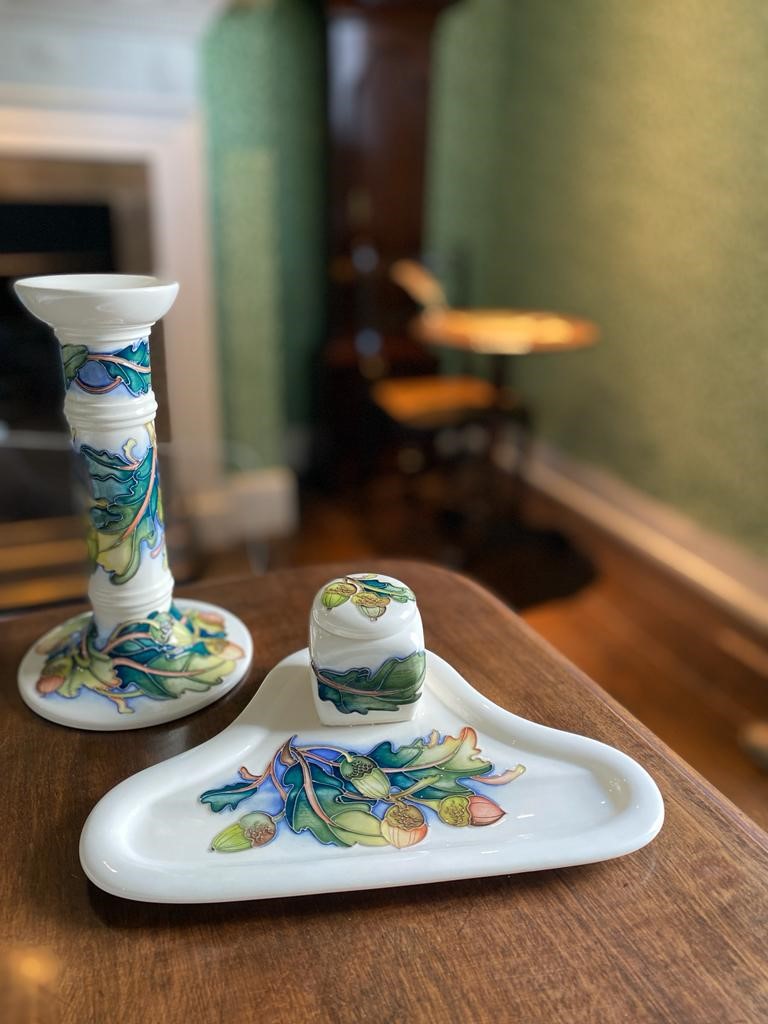Charitable Connections - Jane Austen’s House

Moorcroft will make a donation to Jane Austen’s House for each Jane Austen inspired design sold, that carries the special Jane Austen backstamp, supporting the conservation and engagement work carried out at this special place.
View Jane Austen CollectionIt is well known that Jane Austen’s Emma, the title and lead character of one of her novels, had a passion for matchmaking. In Austen’s time, many a bachelor would have worn a cornflower in his pocket to show his marriage availability. Moorcroft designer Emma Bossons FRSA now captures Jane Austen’s quintessentially English country cottage in Chawton, Hampshire, and sows her own Bachelor’s Buttons in heights around the house itself; gloriously spikey blooms bursts with royal and powder-blues, tinged with violet hues. Other cottage garden flowers join the foray: wild-strawberry pink and wine-coloured aquilegia; a bountiful backdrop of white mock orange blooms, all fluttering and falling like ladies’ petticoats in a breeze.

Jane Austen’s friend Martha Lloyd wrote a Receipt for Ink within her Household Book, which is today one of the many treasures of Jane Austen’s House. Martha lived at the House, with Jane, Cassandra and Mrs Austen for many years, and her Household Book would have been used regularly in the kitchen. Martha’s manuscript contains not only recipes for food but also recipes for useful household items such as the receipt for ink. In the years before many commercially available preparations were available, homemade recipes were important, and written recipes like Martha’s not only passed essential knowledge onto servants but also preserved them for future generations.

To mark the 250th anniversary of the birth of Jane Austen’s older sister, Cassandra, Jane Austen’s House planted an orchard in her name. It is thanks to Cassandra that we have an image of novelist, Jane Austen hanging in the National Gallery, and glimpses of the love and encouragement they both gave to each other in letters where Jane also details flowers and fruit growing in the garden. Verbal sparring over fruit often takes place in Austen’s novels, with her notorious Emma Woodhouse, the 21-year-old protagonist of her 1815 novel Emma, stating

And so it is with Austen’s Orchard, plump plums, and matt-ochre coloured Ribston Pipin apples dangle temptingly from branches as ghostly gooseberry’s peek through the thicket over rings of kitchen garden strawberries, arching one over another in a decadent tumble of cadmium reds.
Find out more about Jane Austen’s House at www.janeaustenhouse.org
Jane Austen’s House Charity Reg No. 1156458
